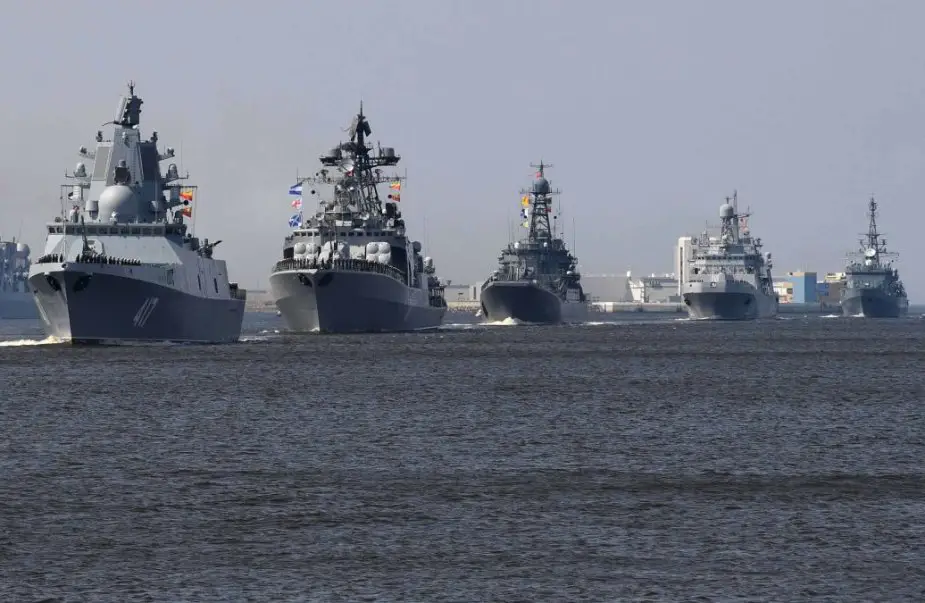Russia is building new-generation warships and submarines and upgrading old ships. Design of next-generation warships and submarines is beginning. The Defense Ministry and industry have sustainable perceptions of the development of major classes of warships and auxiliary vessels, the Independent Military Review writes.
Follow Navy Recognition on Google News at this link
 Russian naval forces. (Picture source: Russian MoD)
Russian naval forces. (Picture source: Russian MoD)
The creation of prospective multirole surface warships will be based on the following guidelines: 1) unification of the main arms and technical means. The weapons, launchers and fire controls have to be unified to the maximum to decrease the range of designed weapons and operational and training costs.
The design and introduction of basic electronic, automatic and control means increases the capabilities depending on warship class and missions: 2) automatic combat controls increase combat and defense capabilities due to reliability of weapon engagement in electronic warfare conditions, 3) the modular scheme of the warship, its main arms and technical means decreases the time of construction, overhaul, and upgrade, as well as operational costs at various life cycle stages, 4) new technologies and materials decrease reflecting and emission characteristics of warships.
New trends in Navy engagement in sea warfare will affect the development of warships in foreseeable future. As the warships approach the coast and operate in shallow waters facing the threat of destruction by mines, missiles and torpedoes, they will need adequate survivability which demands stricter requirements to passive protection and new construction concepts focusing on multi-hull ships. The hull has to be reinforced and divided into autonomous anti-fire areas and protection zones against mass destruction weapons. Double watertight bulkheads and main decks are to be used.
Higher survivability will be achieved by high-quality steel and plate armor in the most important premises. Some of them will be located under the upper deck in the middle of the warship. Aluminum alloys will be gradually abandoned.
Physical fields will be decreased, mostly acoustic, thermal and radar signature. Explosion, shock and vibration resistance of equipment will be increased.
Torpedo defense will enjoy priority attention, including passive acoustic counteraction and automatic active anti-torpedo complexes.
The specifics which emerged in early XXI century will also influence warship development. They include the construction of a warship as a single multirole weapon, a sectional construction method with standard modules and equipment, the possibility of upgrade due to modular container arms, decreased types and classes of new warships created on the basis of predecessors, increased significance of controls and stealth requirements, design of warships on a multinational basis and unification of requirements, a broad range of air weapons and cruise missiles, effective restoration of combat capability by basic technical maintenance, increased round of munitions, optimized displacement and size, seaworthiness, stability, maneuverability and speed, upgrade of electronics due to electric motion, and a new generation of gas turbine (combined) power plants.
© Copyright 2020 TASS Navy Recognition. All rights reserved. This material may not be published, broadcast, rewritten or redistributed.



